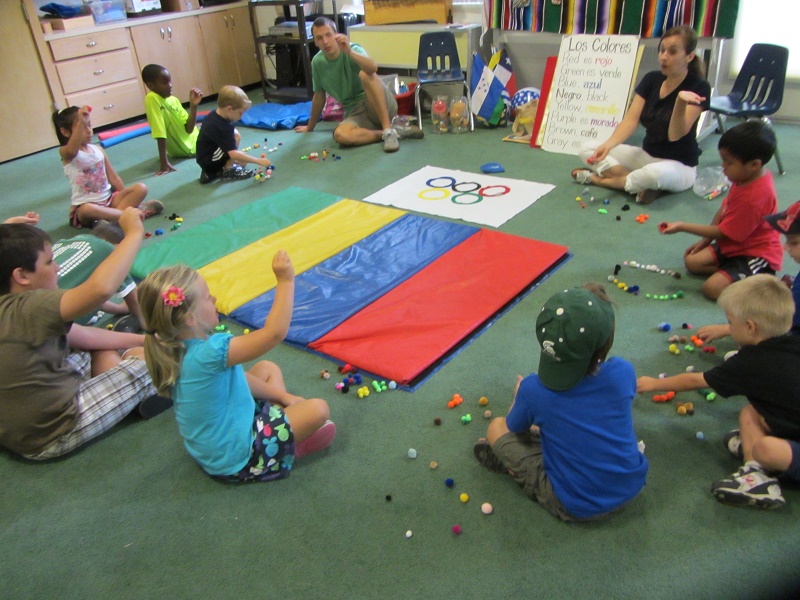Today I have the pleasure of writing another article about resilience. Surely this is the most special entry I have written about this term because it is focused on children at an early age. For me it is not easy to write about these ages for two reasons: the first because I do not have children and the second because I teach classes to students between 12 and 18 years old.
Today’s article is very special because through an extraordinary video of just over 3 minutes you will be able to transmit to your children, you will be able to transmit to your students what resilience consists of from a metaphor as simple as effective.
Do you want to learn how to teach your children and/or students what resilience is? Well, come with me. The story of the child and the hippopotamus. An extraordinary lesson to teach what resilience is.
What is Resilience?

- Resilience is when a living being, plant, animal or human being.
- It resists a pressure so strong and it recovers!
- Receives blows, offenses, and abuse and he recovers!
- Does not feel defeated by the ugly, the difficult or the annoying that happens to him in life, even if he falls and gets dirty.
Cause of resilience
- It allows you to recover.
- It allows you to fight.
- It allows you to take out of your life the bad and the dirty.
- It allows you to withstand any pressure.
- It allows you to get back on your feet.
- It allows you to recover your mood.
- It allows you to learn something from each moment.
- It allows you to endure serious problems.
- It allows you to be calm, even if your body is flooded with sadness.
- It allows you to use your skills to deal with any bad situation.
- It allows you to take advantage of a bad experience to get something positive out of it.
- It allows you to absorb the good of home living.
- It allows you to squeeze negative emotions.
- It allows you to grow with your feet on the ground at all times.
- It allows you to improve and be better despite all the blows you receive in life.
Aspects I would highlight about the resilience

1. Metaphor. I think the idea of transforming a capacity into an object is very original, in this case the video changes a concept as abstract as the resilience in a sponge in the form of a hippopotamus.
2. Experimentation. There is no better way to learn than experience. What the child does in the video is to learn from experimentation. Basically, he is not experimenting with a hippopotamus, but with his own resilience and this fact seems fantastic to me. I think it is something that must be valued enormously at an early age.
3. Game. In addition to experimenting with the sponge in the form of a hippopotamus, the child is playing with the ability to overcome the adversities he will have from now on. The importance of the game, moreover, the importance of symbolic play is another very positive aspect of the education of any emotion or ability, including resilience.
4. Message. The message of what is the resilience in the video has a quality that I think is very positive and is that it is created from very short messages. They are very simple sentences as a slogan and they are relatively easy to learn and memorize.
5. Language. The language seems to be something fundamental to explain a concept as complex as resilience. In addition, said language must be focused on what the child is experiencing and not on the concept of resilience itself. What do I mean by this? That a child does not have to know what resilience is, because resilience in these ages should not be learned as a concept, but be lived and experienced.

6. Sponge. The object chosen to teach what is resilience seems simply great. It is an object that seems very daily to the child, since it is part of the ritual of his daily bath. In addition, the characteristics of the sponge means that no matter how much it is handled, it always returns to its original position.
This is the great value of the object and this is the great value that must be transmitted to children when teaching them what is meant by resilience.
7. Hippo. Another success that I consider the video is the use of the sponge in the form of an animal, specifically in the form of a hippopotamus.
The fact that at the time of working the resilience with the child the sponge adopts a recognizable form for any child adds a very significant value to the explanation. Why? Well, because the child, when he has the sponge in the form of a hippopotamus, stops thinking that it is a sponge and only thinks of the hippopotamus as an animal, as a living being, a living being just like him.
8. Music. Another element that I would like to highlight from the video is the music that accompanies it. In this sense, I have edited the video to put a music that was consistent with the concept of resilience. I think it is important that when you are watching the video on resilience you can create an appropriate atmosphere since it is a concept that is closely linked with pain, loss, and suffering.
9. Loud laughter. In line with point number 8, I also thought it appropriate to add the laughter of some children at the end of the video. I believe that this small resource can help children realize that no matter how much the hippo suffers, no matter how much the child suffers, in the end, if they are resilient people, they can get out of any adversity with the best of smiles.
Because resilience is a process, but the most important part of this process is that you can leave it with laughter, with the laughter of a child.

10. The child. Although the main protagonist of this video on resilience is the sponge in the form of a hippopotamus, I would also like to highlight the presence of the child. Personally, I liked that almost in the whole video only a part of his face appears. Why? Because the important thing is not the child itself, but what the child does with his hands.
And what does the child do with his hands? So experiment with resilience. Only at the end of the video is the child with his best smile, a smile that tells you that he has understood what resilience is.
The suffering of the hippopotamus on the part of the child. Resilience can and must be taught.
Throughout the little more than three minutes of the video, the sponge in the shape of a hippo goes through:
To be hit until the ground. In life it is inevitable to receive blows. There are blows that are very hard and that hurt a lot. But however hard the blow is, you always have to have the strength to get back on your feet. And resilience makes it possible.
Being buried by sand
In many occasions, life covers you with pain and suffering. But all that pain and suffering comes a moment when it stops. When stopping is when the resilience is responsible for removing that pain, to sweep that pain to leave it aside and allow to continue with life.
To be buried by the pressure of a rock
In life there are moments when the pressure that surrounds people is so strong that it ends up burying them, sinking them. That’s why resilience is so important, because resilience is stronger than any stone, because resilience is able to withstand the greatest of pressures. The resilience allows to remove the pressure of the stone to have the possibility of getting back on its feet.
Be flooded by liters and liters of water . There are times in life that you have the feeling that you can not absorb all the difficulties that arise. But what people do not know is that resilience has the capacity to absorb these difficulties and then manage them properly.
Being squeezed

When people feel totally absorbed by their adversities, it is when resilience becomes more necessary and essential than ever. Because resilience has the capacity to expel all that water that has absorbed us, because resilience becomes the opportunity to take out, to squeeze out the problems, the pain and the suffering that each one has inside them and always from the self-knowledge and serenity.
Thanks to resilience, suffering can be transformed into an opportunity to bring out the best in oneself. Surely you know the expression ” what does not kill you makes you stronger “. Well, what resilience does is, precisely, make you stronger in the face of all the adversities that arise in life.
And the most important thing is that each adverse situation experienced must be known to draw a positive conclusion, that is, it is to absorb the bad to get the bad out of the good as, for example, a teaching, an experience, an experience that let go forward, let you stand up, let yourself be compensated.








